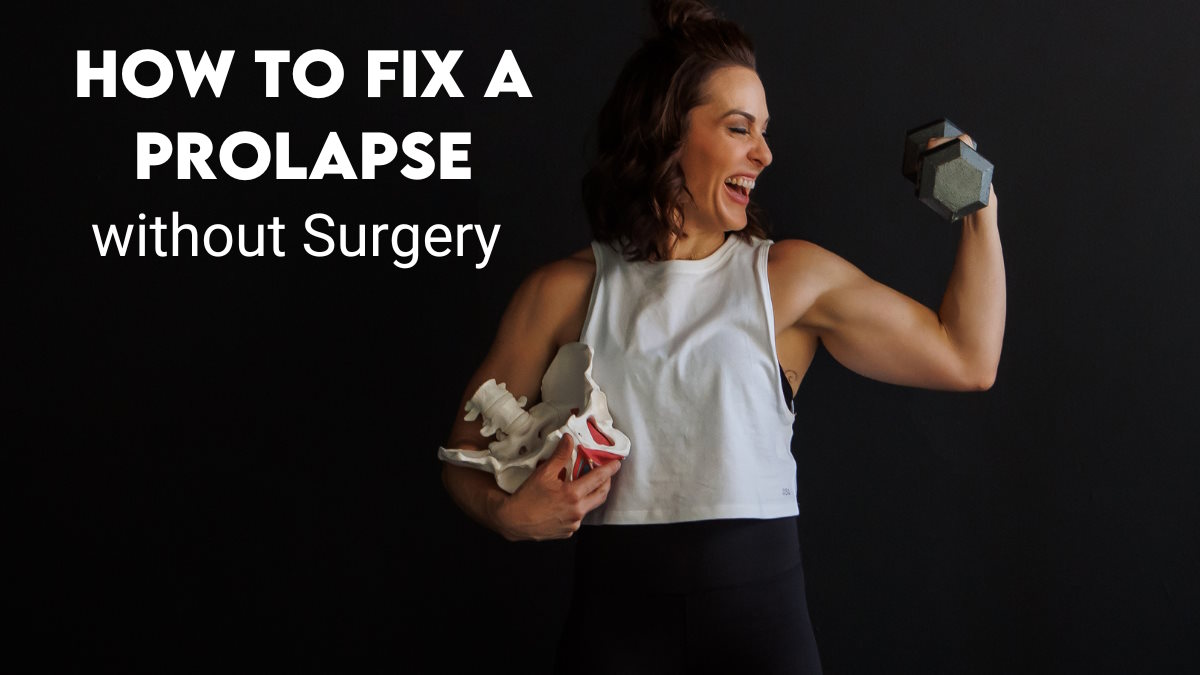Living with a Lapsed Lady: Non-Surgical Solutions for Prolapsed Bladder
A prolapsed bladder, also known as cystocele, occurs when the pelvic floor muscles and tissues weaken, causing the bladder to bulge into the vagina. While the thought of surgery might seem daunting, there are effective non-surgical options to manage and improve symptoms associated with a prolapsed bladder. This article explores these strategies, empowering you to take charge of your bladder health.
Understanding the Lapsed Lady: Causes and Symptoms
Several factors can contribute to a prolapsed bladder, including:
- Childbirth: Vaginal delivery, especially multiple births, can weaken the pelvic floor muscles.
- Age: As we age, natural hormonal changes and loss of muscle tone can increase the risk.
- Chronic Coughing or Straining: Activities that put pressure on the pelvic floor, like chronic coughing or constipation, can worsen a prolapse.
- Obesity: Excess weight can put extra strain on the pelvic floor muscles.
Symptoms of a prolapsed bladder can vary but might include:
- Pelvic pressure or heaviness
- Urinary incontinence (leakage)
- Difficulty starting or stopping urination
- Frequent urination
- A bulging sensation in the vagina
- Pain during intercourse
While these symptoms can be bothersome, they are often manageable with non-surgical interventions.
The Non-Surgical Arsenal: Empowering Strategies
Here are some effective non-surgical approaches to address a prolapsed bladder:
- Pelvic Floor Muscle Exercises (Kegels): These exercises strengthen the muscles that support the bladder, vagina, and rectum. Regular Kegel exercises can significantly improve symptoms and prevent further prolapse progression.
- Lifestyle Modifications: Maintaining a healthy weight, eating a high-fiber diet to prevent constipation, and avoiding activities that put strain on the pelvic floor can significantly improve symptoms.
- Bladder Training: Techniques like timed voiding (urinating at regular intervals) and double voiding (attempting to urinate twice in one sitting) can help manage urinary incontinence.
- Biofeedback: Biofeedback uses sensors to provide real-time feedback on muscle contractions, allowing for more targeted strengthening of pelvic floor muscles.
- Pessaries: These silicone or plastic devices inserted into the vagina provide support to the bladder and alleviate symptoms like pelvic pressure and urinary leakage.
Choosing the Right Approach: Individualized Solutions
The most effective non-surgical approach often involves a combination of these strategies. Here’s how to determine the best course of action for you:
- Consult your doctor: A thorough evaluation by a healthcare professional is crucial to diagnose the severity of the prolapse and develop a personalized treatment plan. They can guide you on proper Kegel technique and advise on lifestyle modifications.
- Consider lifestyle changes: Healthy habits like maintaining a healthy weight and avoiding constipation can significantly improve your condition.
- Explore non-surgical options: Discuss the benefits and limitations of Kegel exercises, biofeedback, pessaries, and bladder training with your doctor to choose the most suitable options for your needs.
Living Well with a Prolapsed Bladder: Maintaining Progress and Seeking Support
Here are some additional tips for managing a prolapsed bladder and maintaining a good quality of life:
- Be patient: Non-surgical management requires consistent effort and might take time to see significant improvement.
- Maintain a positive outlook: Focusing on the positive aspects of your life and the improvements you’re making can significantly impact your well-being.
- Join a support group: Connecting with others who understand the challenges of a prolapsed bladder can provide valuable support and encouragement.
- Schedule regular checkups: Regular visits to your doctor allow for monitoring of your condition and ensure you’re on the right track.
Remember: While non-surgical options can be highly effective for managing a prolapsed bladder, some cases might require surgical intervention. Your doctor will guide you based on the severity of your condition and whether surgery is the most suitable course of action for you.
FAQ: Navigating the World of Non-Surgical Prolapse Management
Q: Can I still exercise with a prolapsed bladder?
A: Yes, exercise is generally encouraged. However, avoid activities that put strain on the pelvic floor, like heavy weightlifting. Low-impact exercises like walking, swimming, and yoga can be beneficial. Always consult your doctor before starting any new exercise program.
Q: Are there any risks associated with using a pessary?
A: Pessaries are generally safe, but some potential side effects include vaginal irritation and discharge.
Q: How often should I do Kegel exercises?
A: Aim for three sets of 10-15 Kegels daily. Focus on quality over quantity, ensuring you’re contracting the correct muscles. If you’re unsure about proper technique, consult a physical therapist specializing in pelvic floor dysfunction.
Q: What if non-surgical options don’t provide enough relief?
A: If non-surgical interventions aren’t effectively managing your symptoms, your doctor might recommend surgery. There are various surgical procedures available to address a prolapsed bladder, and the best option will depend on the specific nature of your case. Discuss the potential risks and benefits of surgery with your doctor to make an informed decision.
Q: Can a prolapsed bladder go away on its own?
A: Unfortunately, a prolapsed bladder typically won’t resolve itself. However, non-surgical management strategies can significantly improve symptoms and prevent further progression. Early intervention and consistent effort with exercises, lifestyle modifications, and other non-surgical options can lead to a significant improvement in your quality of life.
Remember: This FAQ section is intended for informational purposes only and should not be a substitute for professional medical advice. If you suspect you have a prolapsed bladder, schedule an appointment with your doctor for a diagnosis and personalized treatment plan. With a combination of non-surgical interventions and a positive outlook, you can effectively manage a prolapsed bladder and maintain a healthy, active lifestyle.

